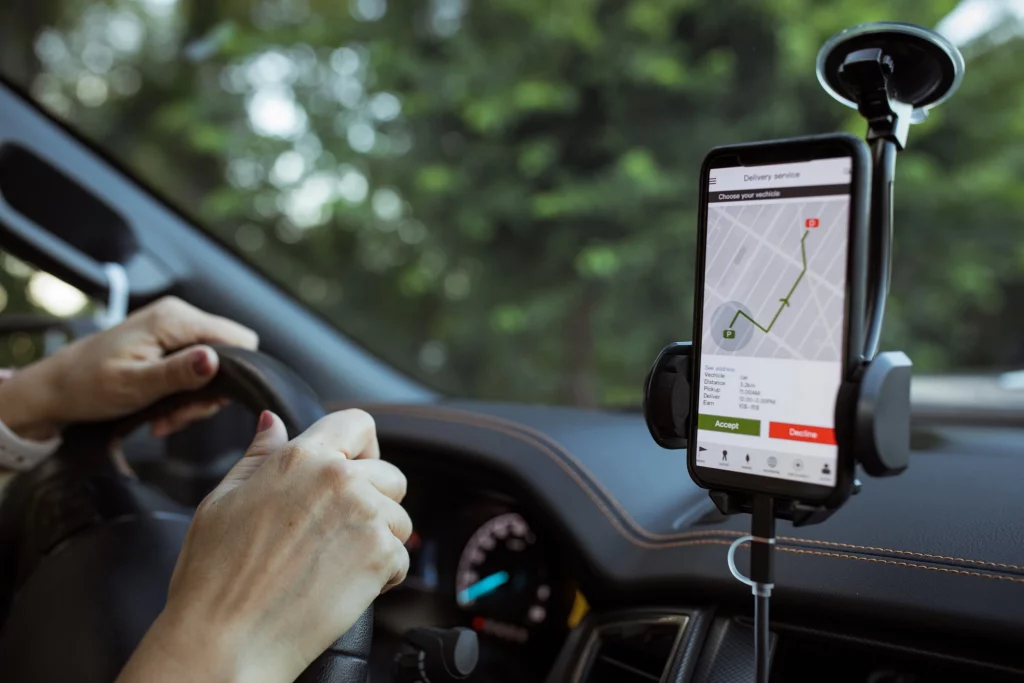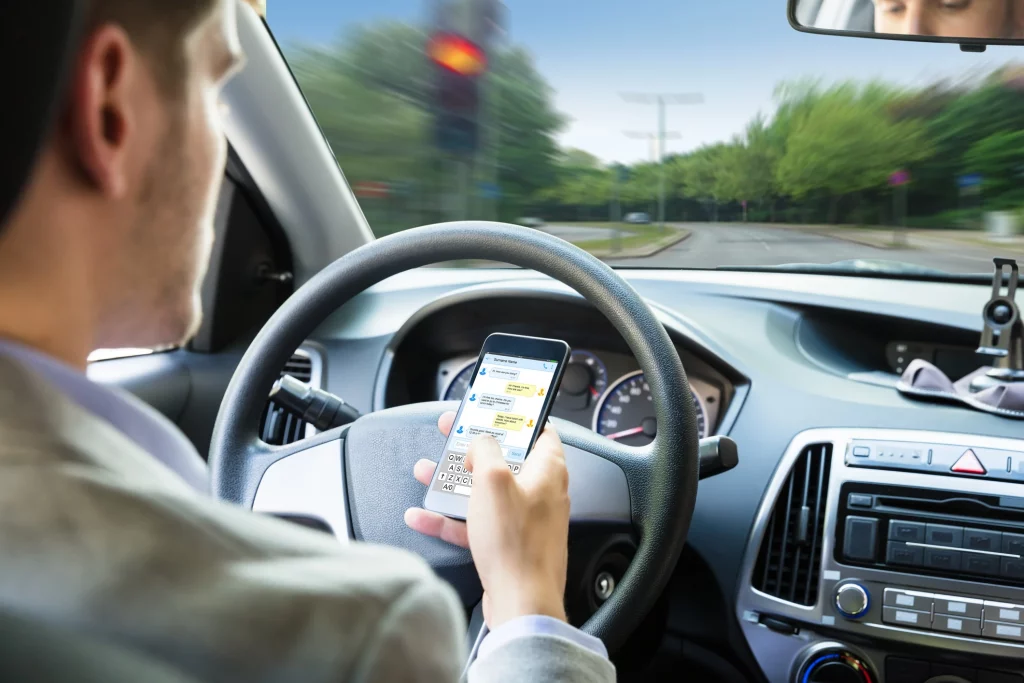Arizona has a law that places some broad restrictions on using a mobile device (like a phone, ipad or other device) while driving. See A.R.S. 28-914.
What a driver CANNOT do:
- Physically hold or support a phone with any part of the person’s body.
- Send or read text messages
- View “internet data” on a phone.
Exceptions, or what a driver CAN do:
- Use a phone or the infotainment system in your car as long as it is used with voice commands.
- Use a portable wireless communication device with an earpiece, headphone device or device worn on a wrist to conduct a voice-based communication
- Use voice-based communications to direct the writing, sending, reading or other communicating of any text-based communication.
- Use of a portable wireless communication device or stand-alone (infotainment) device when used in a hands-free manner for navigation of the vehicle, or for obtaining vehicle information or information related to driving the vehicle.
- A driver may use a hand to activate or deactivate the hands free communication. This exception would apply to something like pressing the talk button on your steering wheel, then using voice commands to make a call, and then ending the call by pressing the button on your steering wheel.
- A driver may pick up a phone in an emergency, like to call 911.
What does this actually mean for a driver?
The language of this 28-914 is broad. It says that a driver cannot physically hold or support a mobile device with any part of the body. This essentially means a driver can’t touch the phone while driving unless they are parked or stopped, like at a stoplight or a railroad crossing.
If your phone falls on the floor while you are driving, wait until you are stopped to pick it up. If you get a text message alert while driving, don’t touch that phone until you are stopped.
If a police officer drives by and sees your hand on a phone for whatever reason, you’ll probably get a ticket.
Even though there are some exceptions, our position is: If you are driving, don’t touch a phone or your car’s infotainment while the car is moving. You can use the buttons on your steering wheel to make a call, if your car is so equipped.
Sure, you might have an argument that you were touching something for purposes of navigation, but even so, odds are not in your favor at a civil traffic hearing. Moreover, if a police officer pulls you over for holding or touching your phone, you will still have to interact with a police officer and interacting with police officers should be avoided.
Penalties for violating A.R.S. 28-914
Fines. At least $75 but not more than $149 for a first violation, and at least $150 but not more than $250 for a second or subsequent violation. In reality, the fines a driver pays to the court will be higher than this because courts will add all sorts of assessments and surcharges to the base fines provided in the statute. Here’s a post about how a $125 fine ballooned to $505 after Tempe Municipal Court added in various fees and surcharges.
Part of the law states “a department or agency of this state may not consider a violation of this section for the purpose of determining whether the person’s driver license should be suspended or revoked.” This appears to mean this violation carries no points, as points are what the MVD uses to determine if they should suspend a driver’s license.
However, this violation also appears to be eligible for defensive driving school. It is on the list of approved violations shown on azcourts.gov. Historically only violations that carried points were on the list of eligible violations for defensive driving school, so this is kind of odd.


